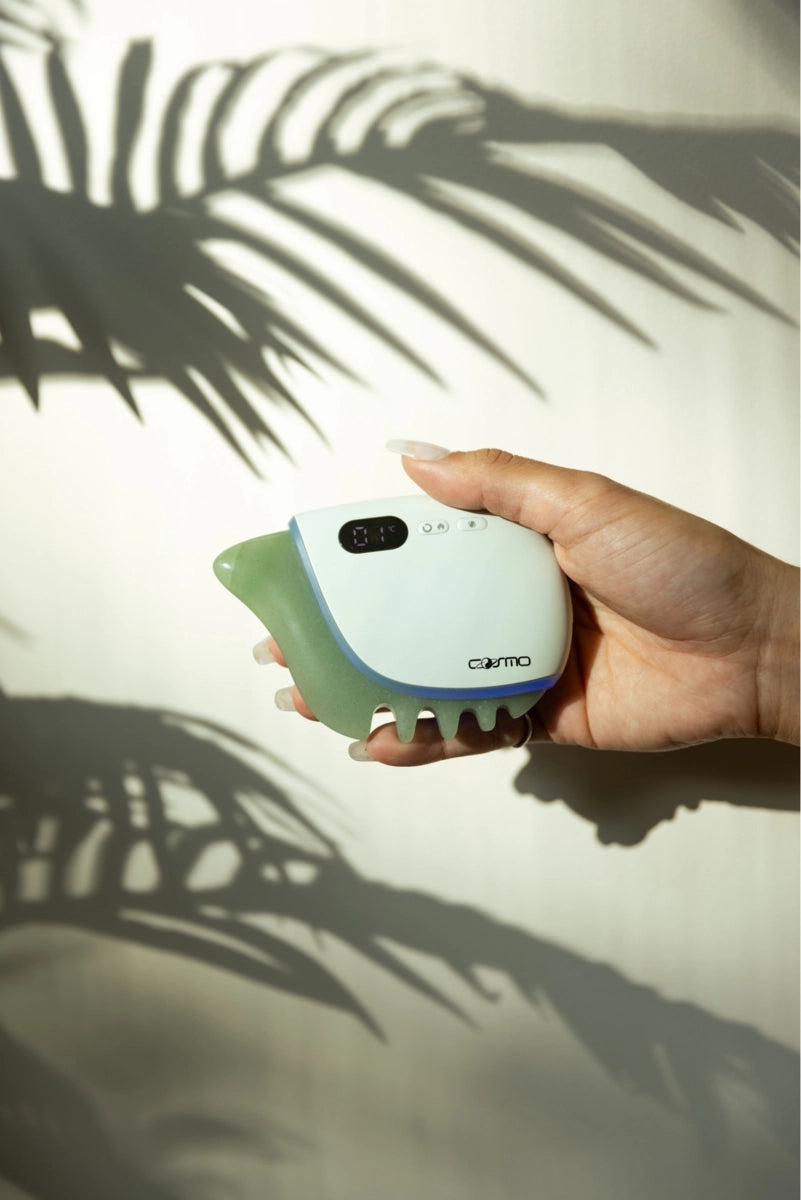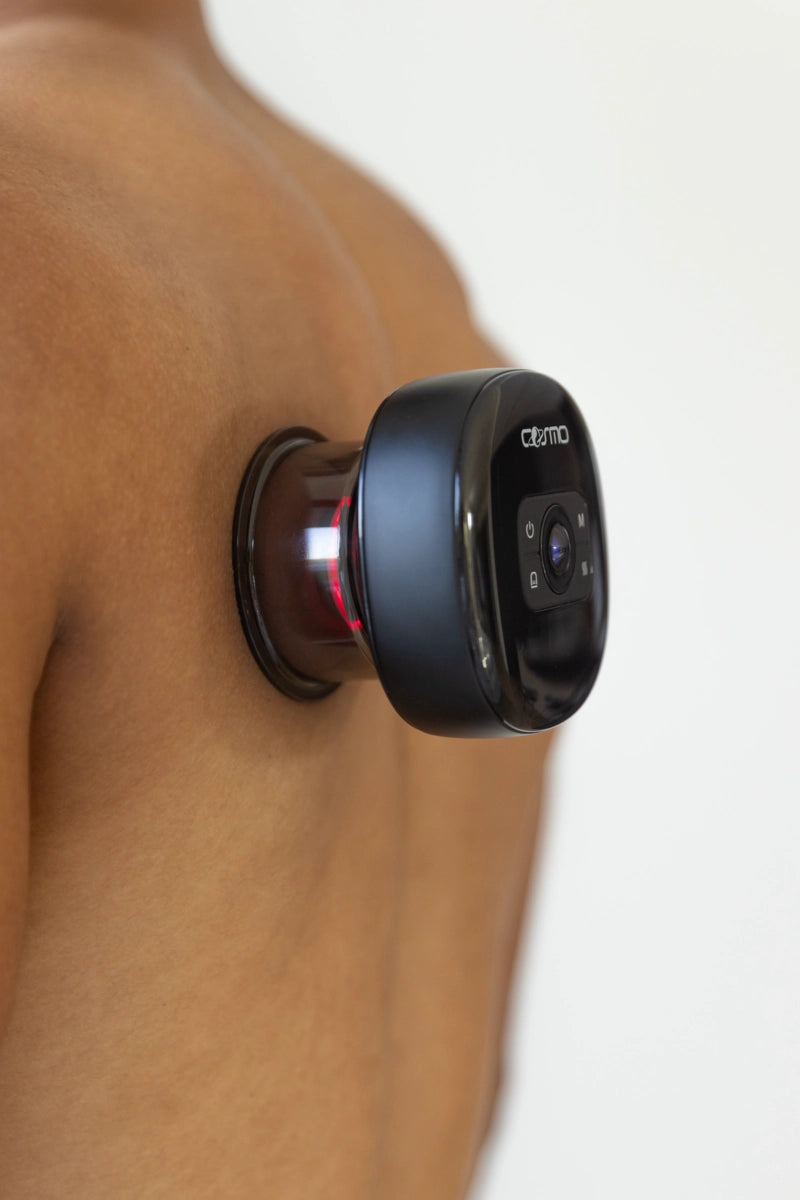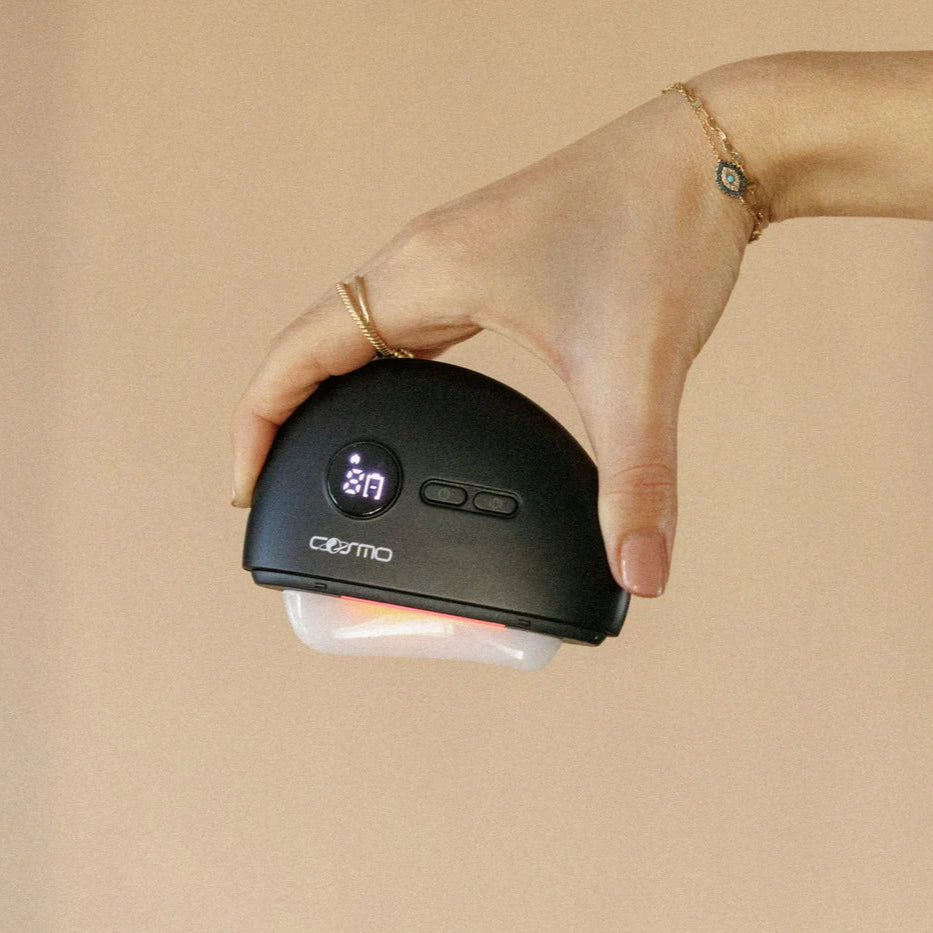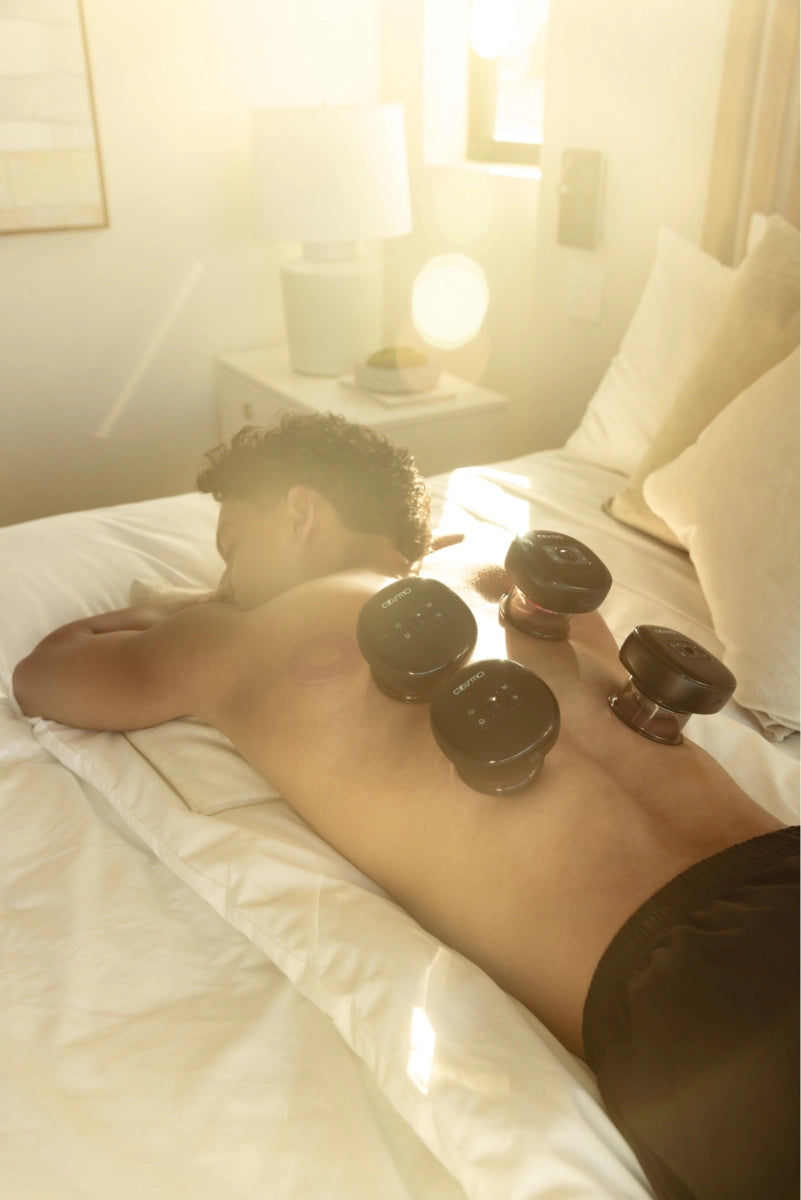

Cupping, Gua Sha, and Myofascial Meridians
Physiological Mechanisms of Cupping Therapy
Cupping therapy – the practice of applying suction cups to the skin – is a classic TCM technique used to “invigorate the blood, dispel stagnation, and draw out pathogenic factors.” Traditionally, cupping is said to unblock meridians and improve the flow of Qi and blood where it is stuck. From a modern physiological perspective, cupping can be understood as a form of negative pressure myofascial therapy. When a cup is applied to the skin (often using heat or a pump to create suction), the underlying tissues are drawn upward into the cup. This has several effects: it stretches and lifts the fascia and skin, causes an influx of blood to the area (hyperemia), and activates sensory nerves.
Under the suction of cups, microcirculation increases dramatically in the localized area. The negative pressure physically dilates capillaries and may cause some to rupture, which explains the characteristic circular bruise marks (ecchymoses) left by cupping. The intentional mild trauma triggers a repair response – the body rushes blood, lymph, and cytokines to the area, promoting healing. Studies using Doppler and other imaging have shown that cupping can significantly increase skin blood flow in the treated region and even in deeper tissues under the cup. One experiment found local blood flow under a cup increased and stayed elevated for several minutes after the cup was removed, indicating improved perfusion. Cupping also appears to stimulate the immune system; the localized bruising prompts an influx of inflammatory mediators that then jump-start a cascade of cellular repair (some describe cupping as creating a “sterile inflammation” that mobilizes immune cells).
Another key effect of cupping is on the fascial tissue layers. By pulling the skin upward, suction separates adhered or tight fascial layers and allows them to glide more freely. This is sometimes called“myofascial decompression”– the opposite of massage (which compresses tissues downward). According to one review,“using suction, the cups grab and lift the fascia”, which can help release restrictions and encourage lymphatic drainage of waste products. If fascia has adhesions or areas of poor glide (often perceived as knots or tension), the lifting action of cupping may break these adhesions and restore sliding mobility between tissue layers. Athletes and physical therapists have adopted cupping for this reason, as it can improve range of motion and reduce muscle tightness by freeing up the fascial connections.
Neurologically, cupping’s strong stimulation of the skin and fascia activates a variety of nerve fibers. The rapid stretch and pressure change can excite A-beta fibers (touch/pressure nerves) which may inhibit pain transmission (the “gate control” theory), leading to immediate pain relief in some cases. There’s also evidence that cupping raises the pain threshold in treated areas – one study on neck pain showed increased pressure pain tolerance after cupping, suggesting a desensitization effect. Additionally, the slight injury from cupping might trigger the release of endorphins and serotonin, contributing to systemic pain relief and relaxation.
Figure: A practitioner performing fire cupping on a patient’s back. In traditional fire cupping, a flame is briefly introduced inside a glass cup to heat the air; the cup is then swiftly placed on the skin. As the air cools, it creates a vacuum that sucks the skin up into the cup. This negative pressure visibly raises a dome of skin and underlying tissue into the cup. Mechanically, this stretches the fascia and muscle fibers upward, loosening tight tissues and promoting fluid exchange. Physiologically, one can observe redness almost immediately as blood rushes to the area under the cup. Over several minutes, capillaries may burst, leaving the characteristic circular bruise (darkened area) which indicates stagnant blood being brought to the surface – in TCM terms, the stagnation is being “drawn out.” Patients often report a sense of relief and warmth in the area after cupping.
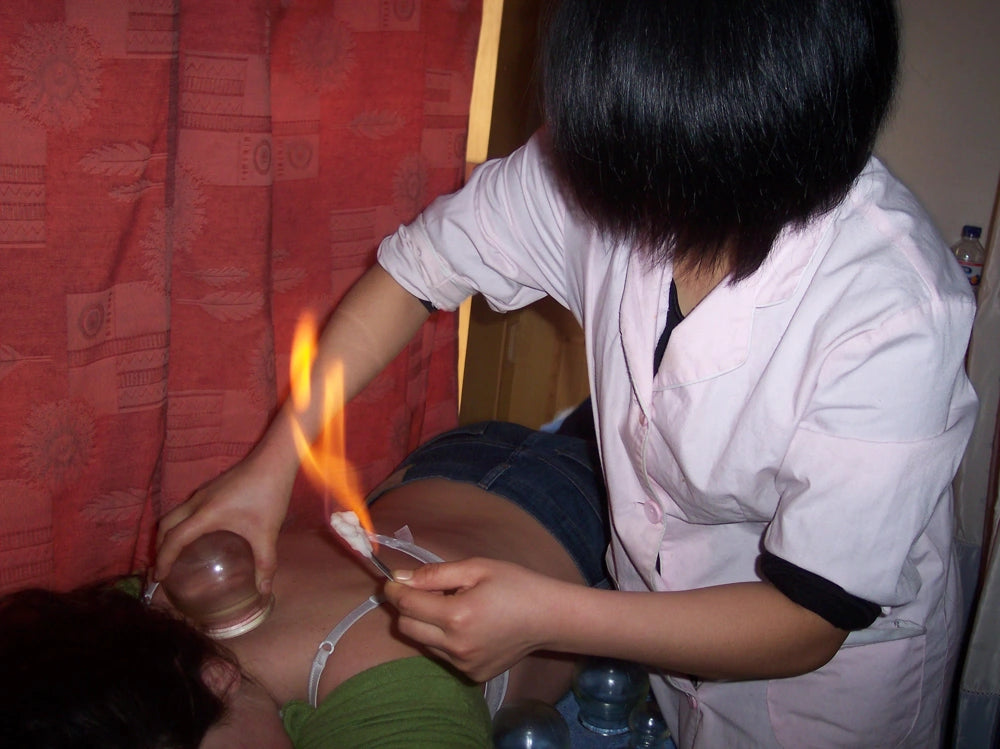

From the standpoint of myofascial meridians, cupping can be seen as a tool to influence the entire line of connective tissue. Practitioners often place cups along a painful muscle group or along a traditional meridian pathway. For example, for lower back pain, cups might be applied in a line up the paraspinal muscles (corresponding to the Urinary Bladder meridian and the Superficial Back Line). The suction loosens the fascia along that pathway and increases blood flow, which can have effects distant from just the cup site. Indeed, TCM clinicians claim that cupping at certain back points can relieve internal organ issues or pain along the nerve/fascia route of that segment. Modern explanations would point to reflexology (cutaneous-visceral reflexes) and the interconnectivity of fascia: freeing restrictions in one part of a fascial chain may reduce tension and pain in other parts along that chain. There is also a potential overlap of acupoints and trigger points addressed by cupping – many times, the location chosen for a cup is an acupuncture point or a myofascial trigger point. By decompressing that point, both the TCM meridian and the myofascial line running through that point are benefited.
Notably, reviews of cupping therapy have identified several proposed mechanisms: the mechanical stretch, the increase in circulation, the immunological mild inflammation, and the neural pain modulation. All of these together result in pain relief, reduction of muscle spasm, and acceleration of healing in the treated areas. Although some in mainstream medicine once viewed cupping skeptically, evidence-based analyses have shown measurable effects. For instance, a 2015 systematic review found cupping can significantly reduce pain compared to usual care in conditions like chronic neck and low back pain, though more high-quality studies are needed to confirm long-term benefits. Cupping is generally considered safe, with the main side effect being the temporary bruising. In TCM theory, the color of the cupping marks is even used as a diagnostic clue (dark purple marks are said to indicate a lot of stagnation/toxins, whereas lighter pink marks mean less stagnation). From a scientific perspective, this simply reflects how much blood was pulled to the surface and the condition of the capillaries – but interestingly, those with very tight tissues or poor circulation often do bruise more intensely, which correlates with the TCM notion of stagnation.
In summary, cupping connects traditional and modern understanding by acting on the fascia and circulatory system in a way that aligns with meridian theory. It “frees up” the stuck tissue (analogous to stuck Qi) and restores flow – whether we describe that flow as blood and lymph or Qi and blood, the end result is improved function and pain relief in the areas along the involved meridian/myofascial line.
Physiological Mechanisms of Gua Sha
Gua Sha (刮痧), often called “scraping therapy,” is another East Asian modality that has gained attention for its physiological effects. In a Gua Sha treatment, a smooth-edged tool (traditionally a ceramic spoon, coin, or piece of jade) is used to scrape the lubricated skin with repeated strokes. The goal is to intentionally raise tiny petechiae (red or purplish spots) on the skin surface – this is the “Sha.” In TCM terms, gua sha dispels “blood stasis” and “heat” from the body by bringing it to the surface. In simpler terms, it’s creating a minor therapeutic bruising that triggers circulation and immune activity.
Mechanically, Gua Sha is a form of microtrauma induction similar to cupping but via shear force. The practitioner presses the tool firmly and drags it across the skin in one direction (not back-and-forth rubbing, but unidirectional strokes). Each stroke causes superficial capillaries to burst, resulting in the distinctive red rash (petechiae) that fades to bruising. The pressure is enough to reach the fascial layer beneath the skin, as confirmed by experienced practitioners who emphasize contacting the fascia without causing open injury. Essentially, the scraping motion produces a deep friction massage of the underlying connective tissue. This can break up adhesions in fascia and muscle, much like certain sports massage techniques, but over a broad region. The result is a rapid increase in circulation and metabolic activity in the area.
Laboratory and imaging studies have documented notable changes after Gua Sha. In 2007, Arya Nielsen et al. conducted a pilot study using laser Doppler imaging to measure skin microperfusion before and after Gua Sha. The results showed a four-fold increase in microcirculation (surface blood flow) at the treated area immediately after scraping. This hyperemia lasted for at least 25 minutes in the study observations, indicating sustained improved circulation in the area. Alongside this, participants consistently reported reduced muscle pain and tightness after treatment. Interestingly, some reported pain relief not only at the treated site but also in distal areas (for example, a person with neck pain might feel relief in related lower back points). The study noted that the pain reduction in distant areas could not be explained by a change in local circulation there (since only the treated area had increased perfusion). This implies a more systemic response, possibly through neural pathways or generalized circulatory/immune effects.
Immunologically, Gua Sha seems to have a profound impact. The scraping creates a transient inflammation that activates the immune system. One study found that Gua Sha upregulated heme oxygenase-1 (HO-1) in skin and spleen tissues – HO-1 is a cytoprotective enzyme that helps combat inflammation. Another research published in 2017 reported that Gua Sha “can up-regulate the innate and adaptive immune functions of the skin and boost the response against intradermal antigens.” In practical terms, after Gua Sha, there is an increase in immune cell activity in the skin (like macrophages and mast cells) and a release of cytokines that may travel systemically. This could explain why some people feel energized or notice improvement in symptoms of illness (e.g., relief from fever or cough) after a vigorous Gua Sha treatment – it’s essentially provoking the immune system to respond to what it perceives as an injury, thereby also addressing underlying inflammation or infection. In Asian communities, Gua Sha is a common home remedy for colds or flu; one might scrape the upper back and neck, often along the Bladder meridian, and many report that it “brings out the fever” or shortens the illness. Scientifically, this might be due to the immune boost and improved blood flow helping the body fight off the infection.
From a fascia and myofascial perspective, Gua Sha’s scraping motion can be thought of as a form of instrument-assisted connective tissue mobilization. Much like foam rolling or certain physical therapy techniques, it likely improves the slide and glide between muscle layers and fascia. By moving across the muscle fibers, it can reduce tone and trigger points. Many myofascial trigger points (knots) are relieved by Gua Sha as the tool’s pressure works out the adhesions and brings oxygenated blood to ischemic (oxygen-deprived) tissue. The next day, as the petechiae resolve, the body has cleared out debris and the microcirculation is improved in that region.
Figure: Gua Sha after-effects on a patient’s back. The reddish streaks and spots are the “sha” – tiny hemorrhages in the skin caused by repeated scraping with a smooth-edged tool. This appearance can look alarming but is intentional and usually fades in 2–4 days. Therapeutically, these marks indicate that stagnant blood and metabolic waste have been brought to the surface, where the body can more easily clear them away. Physiologically, the treatment has caused a robust increase in circulation and an inflammatory response that triggers healing in the underlying. Patients often experience immediate relief of muscle tension and pain in the treated areas, as well as a warming sensation due to increased blood flow. The pattern of petechiae often follows the path of underlying muscle or meridian lines – in this image, the scraping was done along the paraspinal muscles (Bladder meridian area) and the shoulders, common locations for stress and stagnation.


In TCM theory, Gua Sha is used to “release the exterior” in conditions like common colds, meaning it helps vent heat and toxins through the skin. This is consistent with the observation that scraping the skin induces sweating and vasodilation. It’s also used for chronic pain that is fixed in one location (what TCM calls blood stasis or “Bi syndrome”); the idea is that by raising the sha, you draw out the stagnant blood causing pain and allow fresh blood to perfuse the area. Modern research validates this: by causing transient inflammation and then resolution, Gua Sha behaves like a reset button for localized chronic inflammation. For example, if there’s muscle tightness with poor circulation (a chronic knot), Gua Sha causes a flush of new blood into the area and then the body’s cleanup crew (macrophages) remove waste – it’s similar to aggressive massage, but with a different method.
From the viewpoint of myofascial meridians, Gua Sha often follows specific pathways that correspond to both meridians and muscle chains. A practitioner might scrape along the neck and shoulders for a stiff neck – that covers the Small Intestine and Triple Burner meridians in TCM, which roughly correspond to the upper trapezius and related fascia. They might scrape the low back and backs of the legs for back pain – covering the Bladder meridian and hamstrings (part of the Superficial Back Line). Anecdotally, many patients report that after Gua Sha, not only does the local area feel better, but they feel improvements “along the line” of treatment. For instance, scraping the back of the leg might relieve a headache at the back of the head, which makes sense if we consider the Superficial Back Line continuity (toe to brow) – it’s as if the tension is released throughout the entire line. In TCM terms, this would be explained as clearing a meridian channel so the Qi can flow to distant areas again. In anatomical terms, one could argue that reducing fascia-muscle tension in the leg eased pull on the fascia up the spine into the neck.
Another interesting aspect is neurological reflexes: Gua Sha on the back can affect internal organs via the viscerosomatic reflex. The areas alongside the spine (the Bladder meridian in TCM) correspond to the dermatomes and sympathetic nerve ganglia for internal organs. Scraping those areas might improve organ function or pain by reflex modulation. This is a bit beyond our current scientific full understanding, but parallels can be drawn with techniques like reflexology or dermatome massage.
In summary, Gua Sha’s effectiveness is a combination of localized circulatory boost, fascial release, and neuro-immune stimulation. It validates TCM’s insight that intentionally applied external pressure can produce internal changes and pain relief. What TCM calls “releasing stagnation” we might describe as inducing a transient inflammatory response that then resolves, improving tissue health.
Effects of Cupping and Gua Sha on Myofascial Meridians
Both cupping and Gua Sha, while seemingly simple skin-level treatments, have far-reaching effects on the myofascial meridians of the body. They exemplify how manual therapies can modulate the function of connective tissue and thereby influence remote regions and overall well-being.
1. Restoring Fascia Mobility Along Meridians: Cupping and Gua Sha both physically manipulate the fascia – in opposing ways (one by suction, one by friction) – and help restore its elasticity and glide. Restricted fascia can be a source of pain and dysfunction, as it limits muscle movement and can compress nerves or vessels. By releasing adhesions and increasing pliability, these therapies “open” the myofascial meridians. In TCM language, they remove obstructions in the meridian so that Qi and blood can circulate. For example, someone with IT band tightness and lateral knee pain might have stagnation in the Gallbladder meridian (which runs along the lateral leg). Using Gua Sha or cupping along the iliotibial band and thigh fascia can loosen that entire lateral line (lateral myofascial line/Gallbladder channel), often relieving the knee pain and even improving hip range of motion.
2. Enhancing Circulation and Energy Flow: Both techniques produce a surge of blood flow to muscles and skin. Improved circulation means more oxygen and nutrients to tissues and better removal of metabolic wastes. In meridian theory, this equates to nourishing the meridians and clearing blockages of stagnant blood (Yu Xue, in TCM) which cause pain. Nielsen’s study on Gua Sha showed distal pain reduction not explainable by local blood flow, suggesting that these therapies may also prompt central nervous system changes – possibly reducing sympathetic tone and improving blood flow in a global sense. Patients often report feeling more relaxed and even sleepy after treatment, which indicates a shift to parasympathetic (rest-and-digest) dominance – conducive to healing. Acupuncturists view that as the body’s Qi returning to balance.
3. Segmental and Meridian-Specific Effects: Cupping in particular is often applied at specific acupuncture points. For instance, cupping on BL-13 (an acupoint on the upper back related to the lungs) is a common treatment for cough and congestion. How would a cup on the back help the lungs? One explanation: BL-13 lies over the upper trapezius and rhomboid fascia; a cup there may relax respiratory accessory muscles and also create a reflex through the spinal segment that influences lung function (via the nervous system). Additionally, cupping draws blood to the area, which in turn might affect blood flow to the lungs (since the intercostal muscles and pleura share circulation pathways). Gua Sha on the neck (often along the Small Intestine meridian) can improve neck mobility and has been observed to reduce headache frequency – likely by releasing the cervical fascia and improving local circulation to nerves. In essence, by treating a section of a meridian or fascial line, these methods often produce benefits that extend along the entire pathway. This is why a therapist might not need to treat the exact spot of pain if they can treat along the meridian/line and achieve a result.
4. Validating TCM Channel Theory: The fact that cupping and Gua Sha can produce relief in areas far from the treatment site provides modern backing to the idea of connected meridian channels. For example, a therapist might scrape the shoulder blade area to help with lower back pain – seemingly unrelated anatomically, but TCM would note they are on the same Bladder meridian trajectory. If the back pain eases, one could interpret it through fascia: the latissimus dorsi and thoracolumbar fascia (lower back) connect to the upper back fascia; improving glide in one can ease tension in the other. Or through neurology: the dorsal rami of spinal nerves innervate skin over the shoulder blade and also facets in the lower back – stimulation up top could modulate pain signals in the segment that innervates the low back. Either way, it demonstrates internal consistency with channel theory. Modern imaging has even shown that if you inject a tracer dye at one acupuncture point, it sometimes migrates along connective tissue planes to another point on the same meridian, which is a striking visualization aligning with the meridian maps.
5. Long-Term Tissue Remodeling: Repeated treatments with these methods may lead to longer-term changes in the myofascial tissues. Cupping, by mechanically distending tissues, might stimulate fibroblasts in fascia to lay down new collagen in a more organized way, helping repair old injuries. Gua Sha’s induced inflammation followed by resolution can reset a chronic inflammatory state in tissues to an acute one that actually heals fully. Fascia is known to remodel based on stresses placed on it – the concept of “fascial plasticity.” By introducing these therapeutic stresses, one can potentially correct malaligned fibers or thickened adhesions. Some chronic pain conditions (like myofascial pain syndrome or fibromyalgia) are hypothesized to involve a fascia that’s too densified or stuck. Gua Sha and cupping physically disrupt that densification. This suggests why TCM says these techniques “promote blood circulation to remove blood stasis” – in modern terms, they break the cycle of chronic stagnation/inflammation so that healthy circulation and tissue turnover can resume.
Bridging Traditional Theory and Modern Science
The convergence of evidence around meridians, fascia, cupping, and Gua Sha provides a beautiful case study of how traditional medicine and modern science can complement each other. On one hand, TCM provided a functional framework – concepts like Qi, meridians, and blood stasis – to describe phenomena observed in healing. On the other hand, science offers mechanistic explanations – nerves, connective tissue planes, microcirculation, immune responses – that can demystify those observations. When we validate TCM approaches through scientific lenses, we do not diminish the traditional understanding but rather enrich it, making it more accessible to those who think in biomedical terms.
Meridians and Fascia: The idea that meridians map onto fascia means that ancient practitioners, without microscopes or MRIs, recognized patterns of interconnection in the body that biomedicine took much longer to discover. It turns out the body does have an integrative network (fascia plus the embedded nerves and vessels) that coordinates function – Qi could be an umbrella term for the combined bioelectric, biomechanical, and biochemical signaling that travels through this network. By treating the fascia (with needles, cups, or scraping), we influence this complex signaling. As one review put it, viewing acupuncture meridians as the body’s interstitial connective tissue network “favors a holistic approach to diagnosis and treatment”, mirroring the core philosophy of TCM. This helps bridge the gap between the vitalistic language of TCM and the physicalist language of science.
Cupping & Gua Sha as Evidence-Based TCM Therapies: Both therapies show that some traditional techniques can withstand scientific scrutiny and even offer innovative treatment options. For instance, myofascial release and instrument-assisted soft tissue mobilization are popular in physical therapy – Gua Sha is essentially an age-old version of these, now rebranded in some sports medicine circles as “Graston technique” or “scraping therapy.” Cupping has analogs in osteopathic medicine (where they call it “negative pressure soft tissue therapy”) and in sports recovery routines of world-class athletes (who famously sported cupping marks in international competitions). What science has done is measure how these work: we have quantified the increase in circulation, the changes in biomechanical properties of skin and fascia, and the neural effects like pain threshold increase. We’ve observed immediate changes – for example, one case series found that cupping the hamstrings increased flexibility as much as or more than static stretching in athletes. Such findings validate the use of these “folk” treatments in a clinical context.
Integrative Understanding of Health: By appreciating that meridians = fascia (to a large extent) and that treatments like cupping/Gua Sha directly affect fascia and circulation, one can better integrate TCM with conventional care. For example, a patient with chronic neck pain might be seen by a physiotherapist who works on their upper back fascia and by an acupuncturist who focuses on their gallbladder and bladder meridians – unknowingly, they might be treating the same structures in different vocabularies. Knowing the overlap, a more unified approach can be designed. Also, scientific research has shown that these therapies are generally safe and can complement standard treatments, often with fewer side effects than pharmaceuticals for chronic pain.
Research and Future Directions: The growing research base (as cited above: Langevin 2002, Ahn 2008, Bai 2011, Wilke 2016, Nielsen 2007, etc.) encourages more rigorous studies. For instance, imaging technology could be used in real-time to see how fluid flows or fascia moves when an acupuncture point is stimulated or when a cup is applied. Preliminary work has visualized tissue movements several centimeters away from an acupuncture needle insertion, which might correspond to the connected nature of fascia. There are also studies measuring biochemical changes: one found elevated nitric oxide following acupuncture, which could relate to vasodilation along meridians. For Gua Sha, researchers measured a significant decrease in inflammatory markers like TNF-alpha in patients with chronic neck pain after treatment, indicating a reduction in systemic inflammation. All of these help translate TCM concepts (like clearing heat or reducing inflammation) into biomedical metrics.
In conclusion, TCM’s meridian model and therapies like cupping and Gua Sha can be viewed through the lens of myofascial science to find common ground.The fascia network gives a plausible anatomical infrastructure for the meridians, and the physiological responses to cupping and Gua Sha (increased microcirculation, immune activation, fascial release) give credence to traditional claims of moving blood and Qi and expelling stagnation. Far from being at odds, traditional theory and modern research are increasingly telling the same story with different words. This dual understanding empowers practitioners to explain TCM treatments to patients and skeptics in biomedical terms, and it encourages scientists to explore the rich trove of empirical knowledge in practices that have stood the test of time. The ultimate beneficiary is the patient: armed with both paradigms, we can offer more holistic and effective care – treating not just isolated symptoms or parts, but theintegrated wholeperson, just as both fascia science and TCM encourage us to do.
References:
- Bai, Y., Wang, J., Wu, J. P., et al. (2011). Review of evidence suggesting that the fascia network could be the anatomical basis for acupoints and meridians in the human body. Evid Based Complement Alternat Med, 2011, 260510 pmc.ncbi.nlm.nih.govpmc.ncbi.nlm.nih.gov.
- Ahn, A. C., Colbert, A. P., Anderson, B. J., et al. (2008). Electrical properties of acupuncture points and meridians: a systematic review. Bioelectromagnetics, 29(4), 245-256 pubmed.ncbi.nlm.nih.gov.
- Nielsen, A., Knoblauch, N., Dobos, G., et al. (2007). The effect of Gua Sha treatment on the microcirculation of surface tissue: a pilot study in healthy subjects. Explore (NY), 3(5), 456-466 pubmed.ncbi.nlm.nih.govpubmed.ncbi.nlm.nih.gov.
- Nielsen, A. (2009). Gua Sha: A Traditional Technique for Modern Practice – Excerpt in J Bodywork Mov Ther, 13(1): 63-72 thechifarm.comthechifarm.com.
- Myers, T. (2009). Anatomy Trains: Myofascial Meridians for Manual and Movement Therapists (3rd ed.). Churchill Livingstone – Poster images and concepts adaptivebodywork.comcandent.ca.
- IHPC (2012). Cupping mechanisms and fascia: Myofascial decompression in sports therapy. Integrative Healthcare Symposium Proceedings – Summarizes how cupping lifts fascia, improves lymphatic flow pmc.ncbi.nlm.nih.govpmc.ncbi.nlm.nih.gov.
- Chen, T., Liu, N., et al. (2016). Gua sha (press-stroke) therapy boosts immune response to intradermal antigen in mice. Medicine (Baltimore), 95(8), e2628 pubmed.ncbi.nlm.nih.gov.
- Yuan, L., Bai, Y., et al. (2015). Fascia and Primo Vascular System: Architectural basis for meridians. J Acupunct Meridian Stud, 8(5), 228-235 pmc.ncbi.nlm.nih.gov.
- Kurella, A. (2019). Myofascial Cupping: Physical Therapy Applications. Int J Sports Phys Ther, 14(7), 1045-1054 pmc.ncbi.nlm.nih.govpmc.ncbi.nlm.nih.gov.
- Schele, R. (2014). Fascia Science Meets Acupuncture. Acupuncture Today, 15(8) – Discusses overlap of fascial pathways and acupuncture channels in clinical practice pubmed.ncbi.nlm.nih.govpmc.ncbi.nlm.nih.gov.
